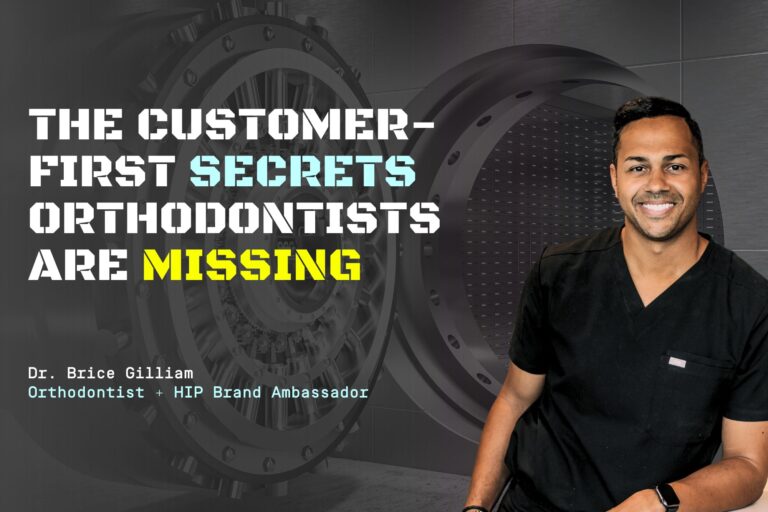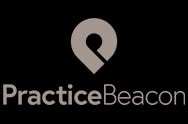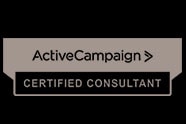Can blogging still drive new patients to your dental practice in 2024? Absolutely. In this no-fluff guide, we’ll walk you through winning strategies for blogging for dental practices, from finding the perfect blog topics to utilizing storytelling to boost engagement to optimizing blog posts to show up on local search results. If you’re ready to unleash a powerful new growth tool in your dental marketing toolkit, let’s jump right in.
How To Start Your Own Dental Practice Blog
Starting a new blog for your dental practice is actually pretty easy, assuming you already have a website. Most website platforms will offer some sort of blogging function, although you may need a developer to enable the pages, make sure everything looks good, and help you set up the navigation and tracking.
Here are the most important steps:
Choose Your Blogging Platform
If you’re adding a blog to your existing website, then your blogging platform may be determined by the platform your website uses. If you’re starting from scratch with a new website, you have a few options.
WordPress, Wix, Webflow, and Squarespace are popular website platforms with built-in blogging capabilities, easy-to-use content management, and user-friendly blogging dashboards. However, you will still need a designer and developer to ensure your site and blog look great, attract attention, and earn the trust of potential patients.
Set Up Analytics & Performance Tracking
Google Analytics is a free tool that will help you understand how prospective patients find your website and how they interact with your content. It shows you the number of website visitors, the duration of their visits, and the most visited pages. You’ll want to hire someone, possibly your developer, to help you set up your tracking to ensure it’s working and show you what to look for as you analyze your performance.
A Crash Course In SEO For Dentists
Blogging falls squarely under the category of content marketing. When you publish to your dental practice blog, you create content that may help people, but ultimately, you hope it will help them find their way to your office. To do that, first, you need Google to find your content and share it in search results.
On-site SEO for dental blogs involves using important keywords in copy and headers, URL structure, meta titles and descriptions, image alt text, and ensuring fast page load times. We’d recommend going through our Dental SEO Guide to learn everything you need. Don’t be intimidated; it’s a lot easier than it sounds.
PRO TIP: Focus On Local SEO
Dental offices differ from Amazon.com or a workplace software solution that can have clients worldwide. Your target area is probably small — a county, a city, or even part of a city — compared to the potential global reach of the internet. So, if you want to reach potential patients in your area, you need to drop clues to Google as to where you are.
If you’re blogging about root canals, for instance, make sure you include a few keywords that target the area you serve, phrases like “root canals Dallas” or “the best dentist for root canals in Dallas.”
Keeping a primary focus on Local search engine optimization (SEO) in your blogs won’t keep your content from ranking nationally or globally. If it’s good content that solves a problem or answers a question for enough people, it will still rank everywhere. But, if you don’t use Local SEO strategies, you’re less likely to show up in search engine rankings for your geographic sweet spot.
So, make sure as many of your blogs as possible incorporate direct mentions of your most important market. You can even blog about events, promotions, festivals, or contests in the local area to continue communicating your geographic footprint to Google loudly and clearly.
There’s more to ranking locally than just blogging, though. For a masterclass on putting your practice on the map, check out our article on best practices for Local SEO.
What Topics Should Dentists Blog About?
Most dental practices struggle with ideas for new blog articles when starting their own blogs. To come up with content ideas, remember that the most important thing about blogging is creating content potential patients will engage with. Start by choosing topics they care about or those that will keep them updated on important happenings.
Your blog topics can range from tips on maintaining oral health to common dental problems, gum disease, dental news, patient care, behind-the-scenes stories, and more. Let’s look at some winning ideas for generating great ideas that both patients and search engines will love!
Start With Frequently Asked Questions (FAQ)
What questions do your patients ask you again and again? What questions do your front desk team hear multiple times a week on phone calls?
The easiest way to make your dental practice blog a winning patient experience is to provide simple, easy-to-understand answers to questions people ask dental professionals every day. These could be quick explainers on how often to brush, how to floss properly, what the best mouthwash to prevent cavities is, why I need dental cleanings or a hundred other common questions. This kind of content may help you raise your position in local search engine results, and it performs really well on social media.
Empathizing with your patients and knowing what answers they need is a great way to earn their trust before they’ve even walked through your door.
Create Educational Resources
Offering educational resources and guides gives your readers in-depth value while establishing you as an authority in their minds to build trust. Here are a few ideas:
- Publish an in-depth guide on pediatric dentistry that covers everything patients need to know about getting an A+ in oral care for their kids from day #1.
- Create a post on maintaining oral hygiene during the holidays to capture their attention with seasonal relevance. If they feel guilty about eating too many sugar cookies, they might click on your post for a few tips.
- Write a post on the duration of teeth whitening treatments to help patients set realistic expectations for cosmetic dentistry.
- Create explainers about procedures like dental implants, root canals, or veneers versus crowns to take the mystery out of procedures for prospective patients and calm their anxiety.
Share Patient Success Stories
Stories of happy patients showcase your expertise and trustworthiness in an authentic and relatable way. Success stories are critical to any dental marketing strategy because they help build confidence in your practice to get amazing results. Showcasing dental procedures with successful outcomes can encourage other folks to commit to much-needed procedures they’d been putting off due to anxiety or uncertainty.
Publishing case studies on overcoming dental anxiety emphasizes the practice’s commitment to patient comfort and positive treatment experiences. Here are a few tips:
- Select stories that align with your practice’s strategic goals and the type of work you’d like to be known for.
- Try to select cases where you can use actual patient images, and maybe their first name, instead of generic or anonymous cases. You’ll need to get permission from your patient, but the case study will be more impactful if it feels authentic.
- Do your best to maintain authenticity and accurately reflect the quality of care. Of course, you’ll want to select particularly impressive cases, but avoid the temptation to exaggerate or be unethical in your approach to storytelling.
Seek Out Guest Posts
What if you could get someone else to write posts for you? And they could bring you more traffic than the posts you write yourself.
Many dental practices never adopt the power of guest posts, a marketing trick that can be a win-win for both parties. Their loss is your gain! Thousands of dental professionals, from dental practice management consultants to dentists to hygienists, are trying to build a personal brand in the dental industry. If you can get one of them to create a guest post for your blog, it can be a win-win.
When you publish a guest post, your guest gets featured on your website and earns a backlink to their own website (valuable for their SEO). In exchange, you get free content from a professional with an established public reputation. Plus, if they’re active online, they’ll help promote the article and get more traffic to your website.
You could even seek out a local influencer or blogger to create a guest post on a dental-related topic, which could draw in new patients specifically from your area.
Feature Local Events & Practice Highlights
As discussed in the Local SEO section above, giving your blog a dose of local flavor is essential to help it stand out in local search results. Also, featuring your work in the community and your team lets you connect with local patients and boosts your likeability. Here are a few ways to do that:
- Community Involvement Spotlights — Create a short blog post whenever your practice or team participates in local events like parades, clean-up days, a cancer walk, etc. Sponsoring the event is even better, but you don’t have to sponsor everything. You can still show up, participate, and take lots of great photos for your blog!
- Team Member Highlights — Introduce your staff members to the world in a blog post and help them connect with your readers. Share interviews that highlight their personalities and to help humanize your practice.
- Announce Office Events — Are you offering 10% off teeth whitening in February? Are you running a fundraiser for Dentistry from the Heart? Or are you hosting a free informational webinar? If so, write a post about it! Not every post has to be SEO-focused. Sharing what’s going on with your practice helps you look active and engaged. Want bonus points? Post your events to your Google Business Profile, too!
PRO TIP: Brainstorm Blog Ideas With Artificial Intelligence
While there are artificial intelligence (AI) tools out there that will create entire blog posts for you, we wouldn’t recommend using them at this point. The quality of the content is still imperfect, and you don’t want to be liable for a computer posting false information on your website. Plus, the future of AI and its impact on SEO is still to be determined.
But if you need help coming up with ideas for your writing, AI can be a big help! Here is an AI prompt for ChatGPT that will generate potential topics for a dental practice blog:
Create a list of the 20 most popular questions people ask about dentists, dentistry, or their teeth.
We received responses like:
- “When should I start taking my baby to the dentist?”
- “What are dental sealants, and does my child need them?”
- “Is it safe to go to the dentist when pregnant?”
- “What does a root canal procedure involve?”
- “Are digital dental X-rays safer than traditional ones?”
Not every idea will be a winner; you may need to adjust your prompts to give you more relevant ideas. But if you’re stuck and need some inspiration quickly, AI can be a big help.
How To Write A Winning Dental Blog Post
Writing a good blog article depends a bit on the type and purpose of the article. But there are a few general rules to follow; let’s look at them:
- Choose A Compelling Title — Your title should clarify exactly what topic your article covers or the problem it solves for your patients. Always prominently include the primary SEO keyword in the article title and URL slug.
- Use Lots Of Headlines & Subheadlines — Great blog articles use frequent headlines and subheadlines to break up long sections of text and make it easy to scan. Bullet points or numbered lists work well also. Check out the structure of this article for reference.
- Use Short Sentences & Active Verbs — Make your article easy to read. Use short sentences, straightforward language, and simple sentence structure. Try to break complex topics down into simple language that anyone can understand.
- Include Multimedia Elements — Wherever possible, always include graphics, photos, and videos in your posts. Media will boost engagement and help you rise in Google search engine rankings.
- Deploy SEO Keywords Strategically — SEO is a critical part of blogging, and you must use your target keyword in the title, on-page headers, and article text. But don’t stuff your articles full of your primary keyword. Write naturally, using your keywords as they would naturally occur. And use variations on your keyword phrase. Google’s algorithm is sophisticated enough to recognize your article’s ” intent ” and will penalize excessive keyword stuffing.
How Often Should A Dental Office Publish Blogs?
There is no firm rule for how often you need to post. It’s more important to be regular and consistent in posting new content. Consistent blogging enhances your brand by:
- Establishing a strong brand identity with regular messaging across all channels
- Training your audience to expect new, helpful content
- Showing Google that you’re a subject matter expert in dentistry
- Giving yourself more chances to get in front of new potential patients
Here are a few best practices for creating consistency in your blogging:
Create A Content Calendar
Creating a content calendar is the first step in maintaining a consistent blogging schedule. It helps you set clear goals for each piece of content and commit to a realistic publishing frequency. If you have the time, feel free to add additional content that’s not on the schedule, like events or client success stories.
Stick To A Posting Schedule
Establishing a regular posting schedule is crucial for building a trusted reader base. It signals readers when to expect new content and helps your content creation team manage their time to meet deadlines.
Automate Publication
Take advantage of a blog management tool to auto-post your blogs at a predetermined time. Scheduling tools like CoSchedule integrate with company blogs via platforms like WordPress, allowing simultaneous content publishing and social media posting. WordPress plugins also help you easily schedule your blog post publication ahead of time.
Are You Ready To Start Your Dental Blog?
Your dental blog is a powerful tool for connecting your dental practice to potential and existing patients, building trust, and showcasing your expertise. When creating blog content, keep your patients in mind — what they want to learn about, what kind of practice they want to work with, and what transformation they wish to see in their lives.
By using your patient as the central focus of your blog while sprinkling in some SEO strategy and consistency, you’re well on your way to creating a highly successful dental blog!










